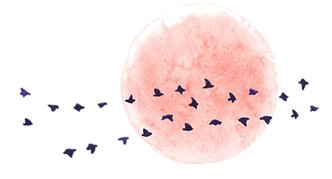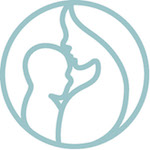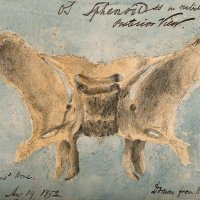Craniosacral Therapy (CST)
Positive Body Awareness
Andrew Cook MSc RCST
Transformational Bodywork
Positive Body Awareness
Andrew Cook MSc RCST
Transformational Bodywork
Articles for Practitioners
These articles are mainly intended for CST practitioners,
but may also be of interest to other bodywork practitioners and maybe body psychotherapists.
IMPORTANT NOTE ON PDF FILES : Some browsers now will download the PDF file by default (i.e. will place it into your DOWNLOADS folder instead of viewing the PDF file in the web browser). If you click on a link and nothing appears to happen, then try looking in your DOWNLOADS folder!
IMPORTANT NOTE ON PDF FILES : Some browsers now will download the PDF file by default (i.e. will place it into your DOWNLOADS folder instead of viewing the PDF file in the web browser). If you click on a link and nothing appears to happen, then try looking in your DOWNLOADS folder!
All articles are subject to copyright and the file should NOT be sent to anyone else -
please instead refer them to this website.
Comments welcome on any of these essays
The Sphenobasilar Sychondrosis (SBS) -aka- The Clivus -aka- the Spheno-Occipital Junction (SOJ) : Revisited
- (A) Re-thinking the SBS. An educational video : A model of Cranial motion in which the SBS is a Fulcrum (and does not bend or hinge). The motion is completely consistent with anatomy and are fully compatible with Magoun's 1st Edition. This way of thinking of the CRI enables a seamless continuity between "biomechanical" and "biodynamic" approaches.
-
(B) Revision and update, first self-published 2016, and revised May 2018
. This was written in response to a published review of the SBS/SOJ literature by Richard Starkey in 2015. It is a much clearer, logical and easier to read. I’d recommend that you start with this one, and then go back to the 2005 article if you want more anatomical detail and/or additional journal references. It has undergone a lot of revision, and (like Blade Runner) may now have reached its final final final directors cut. Comments and correspondence from Cranial practitioners are very welcome. -
(C) Original article published in JBMT with errata corrected, July 2005
A model of Cranial motion in which the SBS is a Fulcrum (and does not bend or hinge). -
(D) A possible research protocol
to demonstrate the existence of the CSR/CRI. It's all written up, I've spent about 6 years in total messing around with research - and just dont think it's very healthy for me to spend any more time in this way. However, this would still be a very useful contribution to the CST world. So this is up for grabs to any institute or professional body (or well organised, experienced and funded group of individuals) that wants to take it up and complete it.
A map of HEALTHY human experience as defined by zones of autonomic activity
-
(E) ANS map
. The start and end points of the arrows is significant. Normally in the day we bob around in the middle (white) zone, will go into fight-flight (left, yellow zone) if necessary, and then re-regulate ourselves, and may go to sleep (right, blue zone) to recover form an infection. Self-immobilisation is given a lot of attention because the main response we have is MOVEMENT! Everyone has experienced healthy self-immobilisations - looking into someone's eyes is a socialisation-immobilisation. Being surprised ("Hey! they sell ice-cream!") creates a startle-alert immobilisation just as much as seeing danger might, and is a pause in which we check our eveluation and decide what response is required. Relationality is a gesture that may be both inward-facing (embodiment) and outward-facing (becoming part of something bigger - a relationahip, a family, the landscape, etc). - (F) Why I no longer apply (most of) PolyVagal Theory : an essay on the difference between scientific theory/hypothesis and the practical application of working therapeutic models. I strongly recommend this video at the Huberman Lab as a general review of the territory generally thought of as "PolyVagal".
(G) Distance Work ("The Edge")
-
A hands-off bodywork approach to working with trauma and relational issues. In some cases of "traumatisation" the body places a defence zone around itself, and anything coming into this zone is considered (by primitive defense reflexes in the hindbrain) to be an invasive and potentially lethal threat. This has implications for any form of bodywork and psychotherapy. The authors experience working with this defense zone is presented, along with some relevent theoretical material. Comments and correspondence from Cranial pratitioners and psychotherapists welcome. The sublect matter has been covered entirely from an experiential point of view, and is supported by some brief notes that skip through the fields biology, physiology, psychotherapy, bodywork, esoterical energy and evolution. Currently being re-written. For the updated version, see book on dissociation - especially the chapter on Boundaries.
The subject matter is being covered in a weekend workshop. This workshop is designed to bring the theory into practice through experiential exercises.
Cells and Gels meets Emanuel Swedenborg
- (H) Swedenborg, Jello and the Tides - an essay on the origins of Cranial work and the nature of the CSR.
- (J) Muscles viewed from the point of view of Gerald Pollacks Gel/structured water model for cell metabolism.
- (K) Microtubules as a possible channel of "Spirituous force" and an organising principle in all stages of cell growth and function.
Miscellaneous essays
- (L) Mirror Neurons : A short essay on this important new area of research. At least 25% of our brain is engaged in playing out the outside world as if we are doing it ourselves withour own muscles. This provides our embodied sense of meaning, and has many implications for treatment, education, linguistics, communication and every aspect of life. Old stuff, currently being re-written.
- (M) The Three Selves : The right relationship between mind, body and spirit
- (N) The Velikovsky-Odent Effect : A look at cultural assimilation of new information.
Interesting videos
- Masaru Enmoto : The Rice experiment. You are what you think.
- The Animal Communicator : Anna Breytenbach (Full documentary).
- Leopard, Impala, Baboon : Dissociation and deep vagal states as a way of survival (it's NOT "playing dead"!) Another much simpler version can ve seen on the Animal Bible Facebook page. And this one




<< ¦ Top ¦ Menu ¦ Front page ¦ Body-Mind ¦ CST/Clinic ¦ Contact ¦ Site Map ¦ Search
all content © Andrew Cook, Norwich UK, 2021




